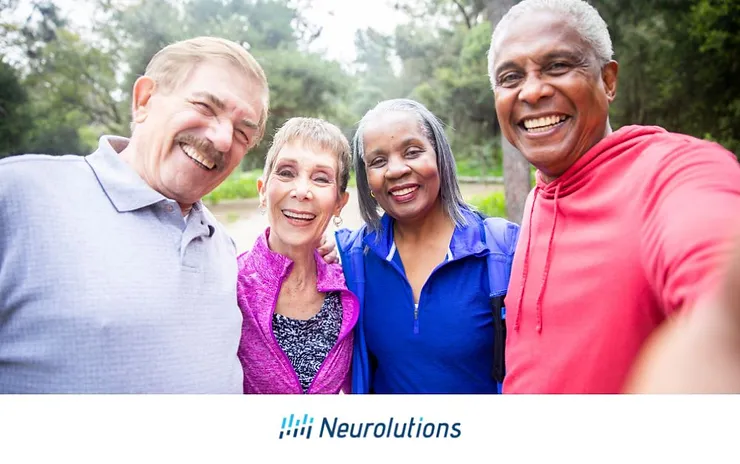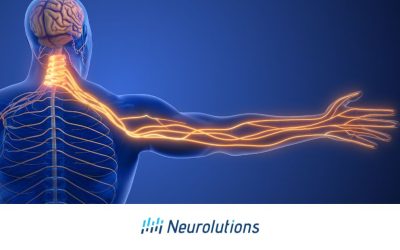It is estimated that 80% of stroke survivors have a one-sided weakness. Anywhere from 20-50% of survivors have tight muscles, often referred to as spasticity, in the affected limb as well. Depending on the area in which the stroke occurs, the survivor may also experience deficits such as ataxia (def: rapid incoordination of motor movements) or decreased balance or sensation which can all affect limb use and the ability to care for oneself.
Tasks that were previously simple such as getting dressed or combing your hair may now be mildly different to not able to complete at all. This can be incredibly frustrating and requires increased care provider burden or support due to assisting with activities of daily living (ADLs). One of the wonderful advantages of living in the electronic age is that adaptive equipment is readily available online and for more affordable prices compared to even 10 years ago. Activity modification- changing the way an activity is completed- can also be helpful. Seek guidance from a trained occupational therapist for training on how best to use adaptive equipment and modify an activity to increase independence and safety with all ADLs.
Adaptive Utensils for Eating and Drinking:
Built-Up Utensils
- Compensates for weakened hand grasp
Offset Utensils
- Compensates for decreased wrist movement and manipulation of the hand
Scoop Plate
- Compensates for decreased wrist movement and manipulation of the hand
Dycem® Or Non-Slip Surfaces
- Dycem® assists plates and cups to remain in place if the individual is unable to hold them with two hands due to a one-sided weakness
Adaptive Cups Or Bottles
- There is a large array of adapted/modified water bottles with two handles, lightweight and long straws which can help compensate for decreased strength
Adaptive Equipment for Dressing:
Elastic Shoe Laces
- The use of elastic shoe laces allows for a wearer to have the shoelaces previously tried but a caregiver. After being tied, the shoes now slip on the laces expand to fit feet insertion and removal. Shoelaces can be used in conjunction with a long-handled shoe horn when putting on or taking off shoes.
Modified Clothing
- Clothing can be modified in many different ways, either professionally or just off the rack. For example, if an individual is having difficulty getting underwear on or off, it may be easier to wear a sports bra that can be put on like a standard t-shirt or bra with zipping up front to eliminate reaching behind the back to hook. Same with pants, elastic waistbands and side button pants are commercially available to ease clothing management for not only dressing but also for toileting and hygiene purposes. Modified clothing has become much more accessible with awareness of all abilities in recent years. For example, shoes that require the use of an orthotic used to be by medical grade or prescription only and are available from popular brands such as Nike, New Balance, and Ugg. See links below.
Long-Handled Shoe Horn
- Using a long-handled shoe horn can help compensate for decreased reach and balance which is required for lower body dressing. When a stroke survivor isn’t able to reach to their feet, cross their leg or bend down fully, a long-handled shoe horn can allow the individual to slip on their shoes without compromising reach or balance. It is best to use a long-handled shoe horn while seated.
Dressings Stick
- Using a dressing stick can help compensate for decreased reach and balance which is required for lower body dressing. When a stroke survivor isn’t able to reach their feet, cross their legs, or bend down fully, a dressing stick can allow the individual to slip on their shoes without compromising reach or balance. It is best to use a dressing stick while seated.
Reacher
- Reachers can help compensate for decreased reach and balance which is required for lower body dressing. When a stroke survivor isn’t able to reach their feet, cross their legs or bend down fully, a reacher can allow the individual to slip on their shoes without compromising reach or balance. It is best to use a reacher while seated. A reacher can also be used to help put on underwear and pants as well as pick up the required items for dressing from the floor or a closet.
Sock Aid
- Sock aids can help compensate for decreased reach and balance which is required for lower body dressing. When a stroke survivor isn’t able to reach their feet, cross their leg or bend down fully, a sock aide can allow the individual to put on their sock without compromising reach or balance. It is best to use a sock aide horn while seated.
Button Hook And Zipper Pulls
- button hooks and zipper pulls can be used with one hand to pull up a zipper or fasten buttons. To make tasks like zippering and buttoning greater ease, velcro, elastic, and snaps can also be added or used in clothing to make the donning/doffing process easier.
Adaptive Equipment for Grooming and Hygiene:
Electric Appliances Such As Toothbrushes Or Razors
- Electric appliances such as toothbrushes or razors can ease the burden of one-handed tasks or rotation of a weak hand or arm while completing the mechanism of action without movement of the appliance.
Universal Cuffs
- Universal cuffs can be used for multiple activities. Items such as toothbrushes, razors, utensils, or other grooming items slip into the holder of the universal cuff. The universal cuff allows the user to hold the item without maintaining an active gasp on the item.
Cleaning Brush With Suction Cups
- Cleaning brushes with suction cups mounted on the tile or shower floor surface are ideal for one-handed washing of the hand or feet. When the brush is suctioned to the sink of the bottom of the shower, the survivor can move the limb of the nail along the brush without movement, allowing for cleaning of the hands or foot.
Automatic or One-Handed Appliances
- Automatic appliances that use motion sensors can be used for a variety of purposes. Examples include dispensing toothpaste onto a toothbrush and soap to a non-affected hand without the use of the other upper extremity
Adaptive Equipment for Bathing:
Long-Handled Bathing Sponge
- Using a long-handled sponge can help compensate for decreased reach and balance which is required for bathing the lower extremity instead of bending to all body parts below the waist
Bath Mitt
- A bath mitt is a glove made out of washcloths. The impaired hand is then placed into the mitt. Velcro at the base is secured around the wrist, allowing the user to apply soap to the mitt one-handed and wash all body parts.
Non-Slip Mat
- A non-slip mat (e.g. a mat whose bottom has stickers or suctions in the bathtub, shower, or outside of the shower) can be incredibly helpful to help in the prevention of falls. Statistically, bathrooms are the number one place for falls in the home due to the presence of water and the small space interfering with safe mobility. Ensure all non-slip mats are secured to the ground.
Grab Bars
- Grab bars, grab bars, grab bars! The more the merrier. Grab bars can be helpful in the shower or next to the toilet or shower to help with balance and safety.
A Shower Chair Or Tub Transfer Bench
- Tub transfer benches and shower chairs are essential to preventing falls in the bathroom following a stroke. Even if the stroke survivor is able to stand and walk into the shower area, it can be incredibly difficult to shower due to fatigue and other deficits. If bathing tasks can be done completely seated, it increases the individual’s ability to be independent with tasks related to bathing such as washing, rinsing, and drying. Pair the use of a seat with non-slip adherents to optimize safety in the bathroom.
Adaptive Equipment for Toileting:
Bedside Commode Or Raised Toilet Seat
- Increased height of a toilet seat increases ease of sitting and standing. In general, toilets are very low to the ground and this can increase difficulty when attempting to use them. Grab bars on the bedside commode itself or next to can also increase the individual’s ability to help pull themselves up or lower safely onto the toilet.
Toilet Tongs
- Toilet tongs can be used to help increase reach to the front or the back of the peri area if weakness or decreased balance interfere with the reach required for wiping and hygiene.
Wet Wipes
- The use of wet wipes can make it easier to clean oneself if limited in functional reach or hand manipulation to perform hygiene thoroughly once completed. Wet wipes or non-rinse shower products can also be used to assist with general hygiene concerns if showering post-stroke is more difficult. Therefore, alternating wet shower and sink shower or wipe use can be helpful.
Websites:
https://www.healthproductsforyou.com/
Community-based swaps of used Durable medical equipment
Stroke support-based swaps for durable medical equipment
https://www.zappos.com/e/adaptive (A wonderful website where you can purchase shoes compatible with AFOs, one of a different size or a single shoe)
https://www.nike.com/w?q=flyease&vst=flyease (Nike Flyease shoes able to get on and off by sliding foot into it)





